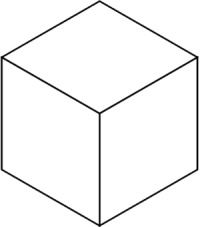
See as well posts mentioning "An Object of Beauty."
Update of 12 AM June 11 — A screenshot of this post
is now available at http://dx.doi.org/10.17613/hqk7-nx97 .

See as well posts mentioning "An Object of Beauty."
Update of 12 AM June 11 — A screenshot of this post
is now available at http://dx.doi.org/10.17613/hqk7-nx97 .
Memories, Dreams, Reflections
by C. G. Jung
Recorded and edited By Aniela Jaffé, translated from the German
by Richard and Clara Winston, Vintage Books edition of April 1989
From pages 195-196:
"Only gradually did I discover what the mandala really is:
'Formation, Transformation, Eternal Mind's eternal recreation.'*
And that is the self, the wholeness of the personality, which if all
goes well is harmonious, but which cannot tolerate self-deceptions."
* Faust , Part Two, trans. by Philip Wayne (Harmondsworth,
England, Penguin Books Ltd., 1959), p. 79. The original:
… Gestaltung, Umgestaltung,
Des ewigen Sinnes ewige Unterhaltung….
Jung's "Formation, Transformation" quote is from the realm of
the Mothers (Faust , Part Two, Act 1, Scene 5: A Dark Gallery).
The speaker is Mephistopheles.
See also Prof. Bruce J. MacLennan on this realm
in a Web page from his Spring 2005 seminar on Faust:
"In alchemical terms, F is descending into the dark, formless
primary matter from which all things are born. Psychologically
he is descending into the deepest regions of the
collective unconscious, to the source of life and all creation.
Mater (mother), matrix (womb, generative substance), and matter
all come from the same root. This is Faust's next encounter with
the feminine, but it's obviously of a very different kind than his
relationship with Gretchen."
The phrase "Gestaltung, Umgestaltung " suggests a more mathematical
approach to the Unterhaltung . Hence…
Part I: Mothers
"The ultimate, deep symbol of motherhood raised to
the universal and the cosmic, of the birth, sending forth,
death, and return of all things in an eternal cycle,
is expressed in the Mothers, the matrices of all forms,
at the timeless, placeless originating womb or hearth
where chaos is transmuted into cosmos and whence
the forms of creation issue forth into the world of
place and time."
— Harold Stein Jantz, The Mothers in Faust:
The Myth of Time and Creativity ,
Johns Hopkins Press, 1969, page 37
Part II: Matrices


Part III: Spaces and Hypercubes
Click image for some background.
Part IV: Forms
Forms from the I Ching :
Click image for some background.
Forms from Diamond Theory :
Click image for some background.
"An image comes to mind of a white, ideal space
that, more than any single picture, may be
the archetypal image of 20th-century art."
"May be" —

Image from this journal
at noon (EST) Tuesday
"The geometry of unit cubes is a meeting point
of several different subjects in mathematics."
— Chuanming Zong
"A meeting point" —

The above death reportedly occurred "early Wednesday in Beijing."
Another meeting point —
(Click on logo and on meeting image for more details.)
See also "no ordinary venue."
Through the
Looking Glass:
A Sort of Eternity
From the new president’s inaugural address:
“… in the words of Scripture, the time has come to set aside childish things.”
The words of Scripture:
“through a glass”—
[di’ esoptrou].
By means of
a mirror [esoptron].
Childish things:

Not-so-childish:
Three planes through
the center of a cube
that split it into
eight subcubes:

Through a glass, darkly:
A group of 8 transformations is
generated by affine reflections
in the above three planes.
Shown below is a pattern on
the faces of the 2x2x2 cube
that is symmetric under one of
these 8 transformations–
a 180-degree rotation:
(Click on image
for further details.)
But then face to face:
A larger group of 1344,
rather than 8, transformations
of the 2x2x2 cube
is generated by a different
sort of affine reflections– not
in the infinite Euclidean 3-space
over the field of real numbers,
but rather in the finite Galois
3-space over the 2-element field.

Galois age fifteen,
drawn by a classmate.
These transformations
in the Galois space with
finitely many points
produce a set of 168 patterns
like the one above.
For each such pattern,
at least one nontrivial
transformation in the group of 8
described above is a symmetry
in the Euclidean space with
infinitely many points.
For some generalizations,
see Galois Geometry.
Related material:
The central aim of Western religion–
"Each of us has something to offer the Creator... the bridging of masculine and feminine, life and death. It's redemption.... nothing else matters." -- Martha Cooley in The Archivist (1998) The central aim of Western philosophy– Dualities of Pythagoras as reconstructed by Aristotle: Limited Unlimited Odd Even Male Female Light Dark Straight Curved ... and so on .... “Of these dualities, the first is the most important; all the others may be seen as different aspects of this fundamental dichotomy. To establish a rational and consistent relationship between the limited [man, etc.] and the unlimited [the cosmos, etc.] is… the central aim of all Western philosophy.” — Jamie James in The Music of the Spheres (1993) “In the garden of Adding — The Midrash Jazz Quartet in City of God, by E. L. Doctorow (2000) A quotation today at art critic Carol Kino’s website, slightly expanded: “Art inherited from the old religion — Octavio Paz,”Seeing and Using: Art and Craftsmanship,” in Convergences: Essays on Art and Literature (New York: Harcourt Brace Jovanovich 1987), 52 From Brian O’Doherty’s 1976 Artforum essays– not on museums, but rather on gallery space: “We have now reached
“Space: what you — James Joyce, Ulysses |
Powered by WordPress